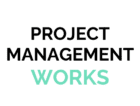With so many proponents of an agile approach to project management where projects are started with a rough idea of the requirements and then the objectives are refined as the project progresses in short bursts, you could be forgiven for thinking that detailed business analysis and the preparation of detailed requirements was a thing of the past. But don’t be fooled, an agile approach certainly works for some types of projects but there are just as many where a lack of requirements can lead to over-runs on the schedule, over-spend on the budget and, worse, not delivering what the client really wanted.
And yet I continue to hear about projects where there is pressure to just get started before really knowing the full extent of what is needed. In many ways this attitude is understandable in the excitement of a new project but documented business requirements are essential, and almost always need to be detailed, before work can, or should, start. If they aren’t then you are simply risking the success of the project.
Business requirements are the formal agreement between the client, the stakeholders and those delivering the work and ensure the client understands what to expect once the project is completed.
Gathering Requirements
Here is an overview of some of the tried and tested methods to use in accurately gathering requirements.
Brainstorming
This technique is helpful for producing a range of ideas on a certain topic in a short space of time. It is most successful when people from all areas of the business are involved and the business analyst encourages full participation from all parties.
Storyboarding
Storyboarding helps break down a project into small tasks so that it is easy to identify areas which are unclear and where more information is required. It also helps to ensure that everyone understands the each aspect of the project in non-technical language.
Interviews
Interviewing stakeholders and end-users on the project is very effective for obtaining relevant information but it is important to recognise that some people could have a very narrow view of the project only from their personal perspective.
Prototypes
Many people find it difficult to visualise an abstract concept so mock-ups or prototypes are useful in such cases to help identify potential problems or usability issues.
Documenting the Requirements
When the requirements have been gathered they will initially be documented at a high-level in order to assess whether they can be delivered and that they will actually satisfy the business objectives. This process will also help to prioritise different aspects of the project.
Requirements should be written in clear and unambiguous language, avoiding technical jargon and provide enough detail to create the new product, process or service. Each requirement must be measurable to verify that it meets the business objectives.
Why Business Analysis is Important
A proper business analysis before starting a new project is the best way to truly transform a business rather than just improving what already exists. It offers the best chance to deliver what is really needed but all too often projects don’t deliver what the business really needs. The business analysis process can sometimes be the culprit here – especially when the process goes on for so long that the requirements are already out of date before the project starts – a real problem with the fast pace of change in so many business environments.
But, on the other hand, good business analysis can also be the solution but it needs to clearly outline what is needed, precisely define the scope of the project and assist in determining the appropriate resources to complete the project, all the while keeping pace with change.





